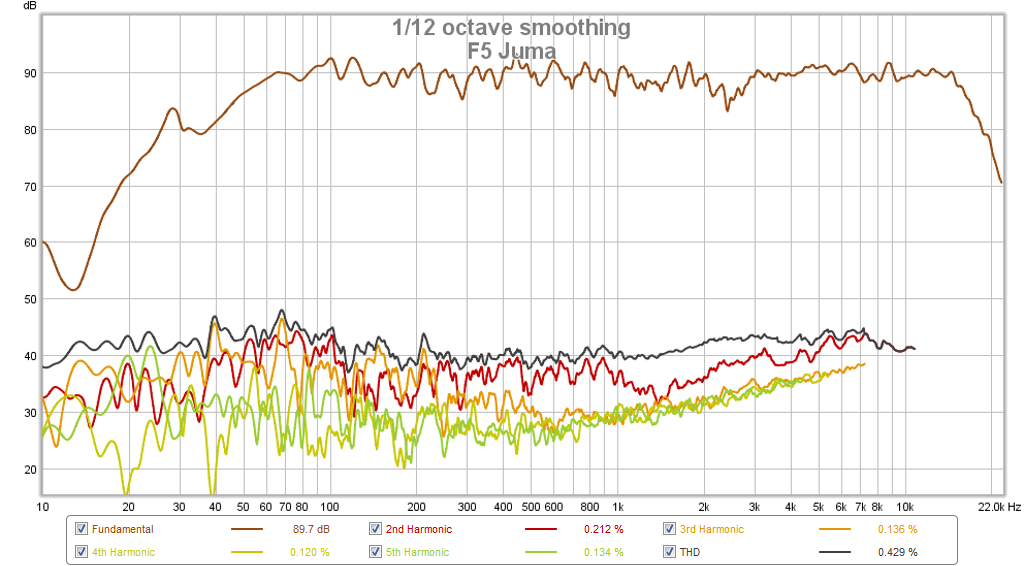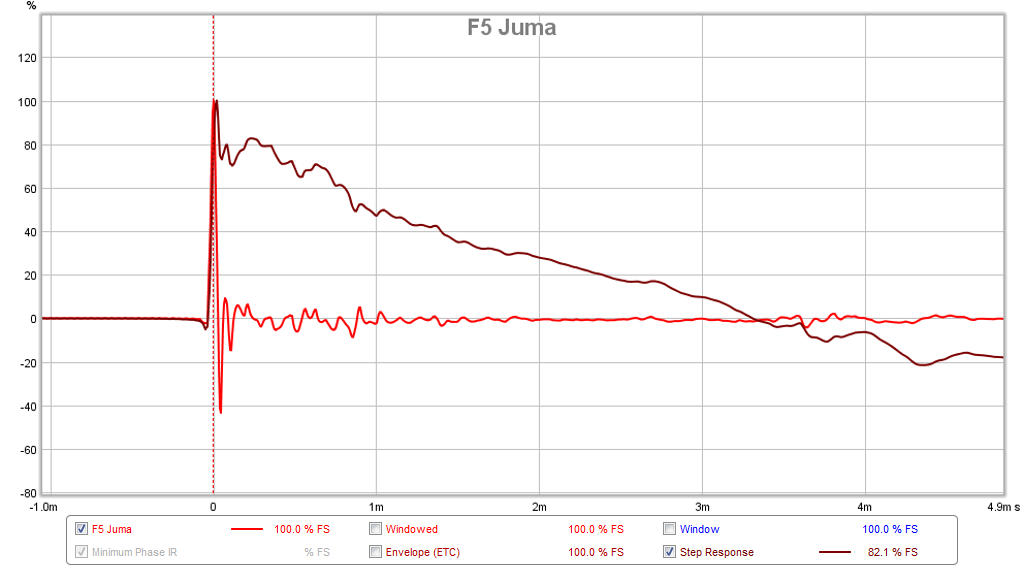I had a listen to a new set of Sonus Faber Amati. It looked really nice, but is too much of a conventional speaker for my taste. I was listening to robbie williams in the store and even if he might be a questionable choice I assume his records are mastered okay. The bass was lacking a lot on the Amati and I was feeling like I was listening to bookshelf speakers. Thr midrange was okay, but lacking some detail that I am used to from horns and electrostats. The tweeter was okay, but not even close to Raal. Overall the crossover was well balanced and whatever sound the drivers produced at least it was equal. I would use them in my kitchen on a Sunday morning when I don't want too much bass to avoid a headache.
Cone/s plus dome = 90% of commercial speakers
They all sound pretty much the same
Yep, but I was impressed how well balanced it was, despite the kind of boring sound.
>>> Cone/s plus dome = 90% of commercial speakers
Yup, I guess that's what the industry has evolved (perhaps 'devolved' is a better word) into. Even the big name audiophile brands like Sonus Faber, Focal, Wilson, etc. seem to sell variations of the same thing - boxes with cones and domes. DIY offers better sound for the money and the ability to experiment with various components to determine which type of sound you enjoy most.
OB and horns are my current cup of tea... no headaches here, just glorious music.
Yup, I guess that's what the industry has evolved (perhaps 'devolved' is a better word) into. Even the big name audiophile brands like Sonus Faber, Focal, Wilson, etc. seem to sell variations of the same thing - boxes with cones and domes. DIY offers better sound for the money and the ability to experiment with various components to determine which type of sound you enjoy most.
OB and horns are my current cup of tea... no headaches here, just glorious music.
Similar experience for me. I listened to a Sonus Faber Omympica 3 in a high end audio listening room. It had a top of the line McIntosh SS amp and DAC. Sound was clear but un-impressive compared to my best DIY efforts. They do look nice with wood and leather finish. I think 80% of the cost of manufacturing is in the cabinet. 🙂
SF Amati Futura at Stereophile Sonus Faber Amati Futura loudspeaker Measurements | Stereophile.com
Smoooth... red room curve is SF, green is TAD R1 and blue Vivid B1
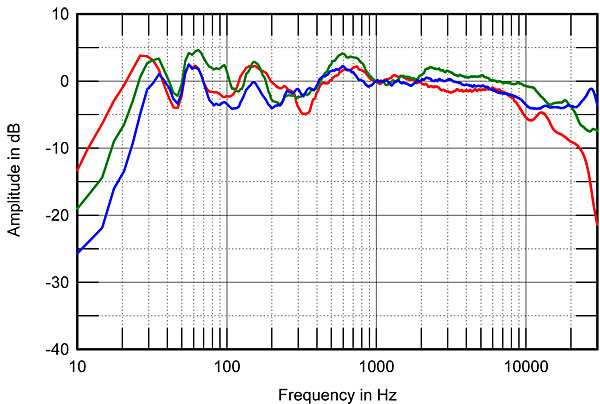
Smoooth... red room curve is SF, green is TAD R1 and blue Vivid B1

Similar experience for me. I listened to a Sonus Faber Omympica 3 in a high end audio listening room. It had a top of the line McIntosh SS amp and DAC. Sound was clear but un-impressive compared to my best DIY efforts. They do look nice with wood and leather finish. I think 80% of the cost of manufacturing is in the cabinet. 🙂
Was that in a Best Buy Magnolia store? I listened to the same setup and the visually impressive SF Olympica 3 speakers did not wow me... they look very nice though. 🙂
No, in small boutique type store in New England. They also had a B&W 802D (Diamond tweeter) also powered with a huge McIntosh SS amp and tube pre-amp, which same as SF Olympica 3, did not knock my socks off either. 🙂 A lot I think was lack of coherent time alignment, and too much splash off of the walls where a horn is much better in that regard.
Here is Sterophile's measured impulse response of 802D - yuck!
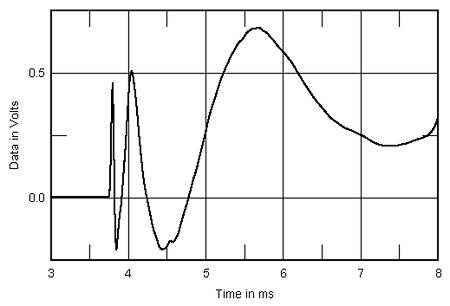
Here is Sterophile's measured impulse response of 802D - yuck!

Last edited:
Man, there was B&W 802D at the Magnolia store too... also a pair of Martin Logan speakers (electrostatic with sub-woofer). The track that the rep played sounded best to me on the B&W 802D out of the 3 "titans". That impulse response does not look good at all... 🙂
Do you like the one below for the Vivid Giya 1 (as measured by Stereophile)?
Do you like the one below for the Vivid Giya 1 (as measured by Stereophile)?
Attachments
Last edited:
That looks bad too. It should be one sharp peak, that's it.
Compare to Stereophile measurement of a transient perfect speaker like Dunlavy SC IV:
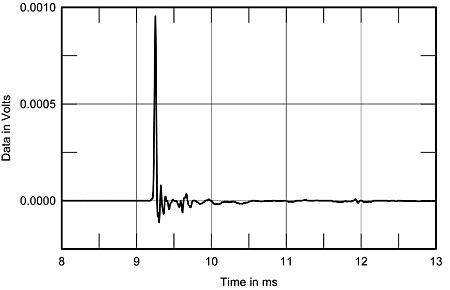
When no regard for time coherency is obvious, the speaker (and XO) was designed against a completely different t set of criteria. Some people say it doesn't matter or that you can't hear it. But once you hear it and know what if is, it's hard to go back.
Compare to Stereophile measurement of a transient perfect speaker like Dunlavy SC IV:

When no regard for time coherency is obvious, the speaker (and XO) was designed against a completely different t set of criteria. Some people say it doesn't matter or that you can't hear it. But once you hear it and know what if is, it's hard to go back.
Last edited:
Is the graph in Post 8 the impulse or the step? Looks more like the latter.
Sorry, my mistake - you are right that was the step. But still not good looking. Thanks for catching that. Can a mod correct post to say it's a step?
Dunlavy step looks like right triangle:
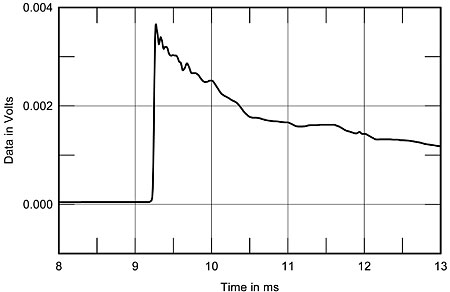
Member
Joined 2009
Paid Member
I've heard some small 2-ways that likely weren't transient perfect even but they sounded right decent to me (small Totem speakers on stands, about 15 years ago) - so it's not necessarily a bad thing that the traditional 2-way has become common. Done well they are an affordable option for many people.
An Interview with Joseph D'Appolito by Hobby HiFI magazine
From the whole Interview that you can find in German here:
Interview HOBBY HIFI mit "D'Appolito" - Visaton Diskussionsforum
this is the part on time alignment, Google translated.
HOBBY HIFI: The term "timed loudspeaker" is on everyone 's lips, and filter circuits of the first order are considered suitable to achieve this goal
A timely reproduction guaranteed?
D'Appolito: There is this famous German loudspeaker company, with whose views I do not agree at all. There are often used all-pass filters for the time adjustment in the range of the crossover. The reason for this is that they use first-order filters. These filters work in theory in a timely fashion, so they do not need time compensation. In fact, the matter does not work. You forget that the loudspeaker chassis also turn at the phase. In practice, there is no
The theory suffices a six-decibel frequency sweep signal. It's pure waste of time to try something like that.
HOBBY HIFI: But in principle, all-pass filter circuits, which rotate the phase position by 180 degrees depending on the frequency, have their advantages?
D'Appolito: All-pass filters make no sense at all in crossover circuits. They turn the phase by 180 degrees, but the group run time, which is the first derivative of the phase after the time, influence it only in the range in which the phase rotation takes place. Nothing happens above and below this region. In a typical two-way loudspeaker with a second-order filter, however, the group delay time in the low-frequency branch is approximately 150 to 200 microseconds greater than in the high-frequency range. Allpass filters can not change this; They only spread the transition over a larger area. If necessary, they are suitable for improving the phase position in the transfer area of a filter. The same effect can be achieved if you move the separation frequency slightly.
HOBBY HIFI: And how do you judge a bass offset on the loudspeaker front to compensate the group delay?
D'Appolito: I'm a practice-oriented developer. People solve problems that do not exist at all. Outstanding goal of any loudspeaker development is a tonally balanced first wavefront. All other efforts must be subject to this objective. Well, if you want to build a timely loudspeaker, then you have to perform a time compensation, whether mechanical or electrical. The problem is: The known methods do not work properly. The depth offset has an optimum effect only on the axis. If you look at the loudspeaker sideways, that is to say under 90 degrees, then there is no depth offset. A depth offset on the baffle is therefore unsuitable for achieving the optimum round beam behavior required by me.
HOBBY HIFI: Is it not better, at least on axis an optimal time behavior to realize?
D'Appolito: I do not think people should put their heads in a vice so they can stay in the "sweet spot." Look, you're also moving around listening to music, and as a rule, you want several It is not possible to maintain the optimum time response on the axle over an angular range of 30 degrees.
From the whole Interview that you can find in German here:
Interview HOBBY HIFI mit "D'Appolito" - Visaton Diskussionsforum
this is the part on time alignment, Google translated.
HOBBY HIFI: The term "timed loudspeaker" is on everyone 's lips, and filter circuits of the first order are considered suitable to achieve this goal
A timely reproduction guaranteed?
D'Appolito: There is this famous German loudspeaker company, with whose views I do not agree at all. There are often used all-pass filters for the time adjustment in the range of the crossover. The reason for this is that they use first-order filters. These filters work in theory in a timely fashion, so they do not need time compensation. In fact, the matter does not work. You forget that the loudspeaker chassis also turn at the phase. In practice, there is no
The theory suffices a six-decibel frequency sweep signal. It's pure waste of time to try something like that.
HOBBY HIFI: But in principle, all-pass filter circuits, which rotate the phase position by 180 degrees depending on the frequency, have their advantages?
D'Appolito: All-pass filters make no sense at all in crossover circuits. They turn the phase by 180 degrees, but the group run time, which is the first derivative of the phase after the time, influence it only in the range in which the phase rotation takes place. Nothing happens above and below this region. In a typical two-way loudspeaker with a second-order filter, however, the group delay time in the low-frequency branch is approximately 150 to 200 microseconds greater than in the high-frequency range. Allpass filters can not change this; They only spread the transition over a larger area. If necessary, they are suitable for improving the phase position in the transfer area of a filter. The same effect can be achieved if you move the separation frequency slightly.
HOBBY HIFI: And how do you judge a bass offset on the loudspeaker front to compensate the group delay?
D'Appolito: I'm a practice-oriented developer. People solve problems that do not exist at all. Outstanding goal of any loudspeaker development is a tonally balanced first wavefront. All other efforts must be subject to this objective. Well, if you want to build a timely loudspeaker, then you have to perform a time compensation, whether mechanical or electrical. The problem is: The known methods do not work properly. The depth offset has an optimum effect only on the axis. If you look at the loudspeaker sideways, that is to say under 90 degrees, then there is no depth offset. A depth offset on the baffle is therefore unsuitable for achieving the optimum round beam behavior required by me.
HOBBY HIFI: Is it not better, at least on axis an optimal time behavior to realize?
D'Appolito: I do not think people should put their heads in a vice so they can stay in the "sweet spot." Look, you're also moving around listening to music, and as a rule, you want several It is not possible to maintain the optimum time response on the axle over an angular range of 30 degrees.
I never understood why one can use this statment:
and at the same time denying the relevance of the time-response. In order to have the mentioned property a speaker must be transient-perfect. If some part of the spectrum is delayed the first wavefront is not balanced at all.
I once used to make my constructions transient perfect. I do now make them in a transient-improved fashion. I.e. I use topologies that are still better in terms of transient response than the ubiquitous LR topologies for instance but not transient perfect.
Something important is still lacking IMHO: A proper definition or standard of the maximally allowed group-delay distortion vs frequency. The Blauert and Laws findings are interesting but not sufficient IMO.
Soemone from the German "Institut für Rundfunktechnik" (IRT) once found the the group delay distortion shouldn't be greater than +- 200us in the midrange. I don't know whether this is sufficient but it does definitely give some leeway to the x-over designers when it comes to using x-overs of orders greater than one (but would still prohibit LR4 in some cases).
Regards
Charles
"....Outstanding goal of any loudspeaker development is a tonally balanced first wavefront. ...."
and at the same time denying the relevance of the time-response. In order to have the mentioned property a speaker must be transient-perfect. If some part of the spectrum is delayed the first wavefront is not balanced at all.
I once used to make my constructions transient perfect. I do now make them in a transient-improved fashion. I.e. I use topologies that are still better in terms of transient response than the ubiquitous LR topologies for instance but not transient perfect.
Something important is still lacking IMHO: A proper definition or standard of the maximally allowed group-delay distortion vs frequency. The Blauert and Laws findings are interesting but not sufficient IMO.
Soemone from the German "Institut für Rundfunktechnik" (IRT) once found the the group delay distortion shouldn't be greater than +- 200us in the midrange. I don't know whether this is sufficient but it does definitely give some leeway to the x-over designers when it comes to using x-overs of orders greater than one (but would still prohibit LR4 in some cases).
Regards
Charles
I don't care much for one-peak step response in multiway speakers. We can see many highle appreciated speakers with high-order xos
Magico, Vivid Audio, PSB, YG Acoustics, KEF etc.
This is Magico Q5
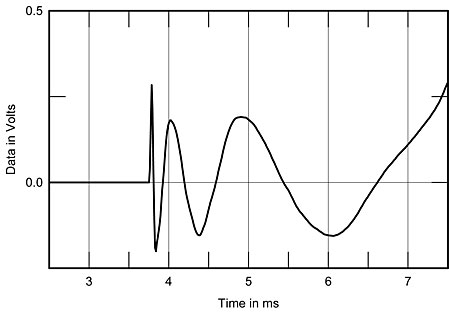
Magico, Vivid Audio, PSB, YG Acoustics, KEF etc.
This is Magico Q5

High price equals excellency. They always remind me about this.
"If your high priced speakers sound like ****, that's your room, your source and your placement, nothing wrong about the speakers themselves. Look at price tag one more time, sir."
Amazing performance (I mean the guy who says these words), I almost believe it.
"If your high priced speakers sound like ****, that's your room, your source and your placement, nothing wrong about the speakers themselves. Look at price tag one more time, sir."
Amazing performance (I mean the guy who says these words), I almost believe it.
That Magico Q5 would definitley NOT fit into the maximum group-delay distortion range of +- 200us. I have never heard any of Magico's speakers so far, so I can't judge their quality. For the effort that is put into them they better be good.
But what I have heard is an older Sonus Faber Amati. Visually it was definitely one of the most beautiful speakers with very refined woodwork and immacualate craftmanship. They ran a recording of "The Corrs" and I must say that they sounded beautifully with female voices. I guess they would have sounded that way with almost anything. But they were a little too polite and I had the feeling that they lacked a bit of the "being there" factor. But a lot of high-end speakers are like that.
Temporal response might probably come after amplitude-response linearity and smooth directivity characteristics. But time dispersion is still a form of distortion and we don't know where the theresholds are yet. So why not minimise it ?
Regards
Charles
But what I have heard is an older Sonus Faber Amati. Visually it was definitely one of the most beautiful speakers with very refined woodwork and immacualate craftmanship. They ran a recording of "The Corrs" and I must say that they sounded beautifully with female voices. I guess they would have sounded that way with almost anything. But they were a little too polite and I had the feeling that they lacked a bit of the "being there" factor. But a lot of high-end speakers are like that.
Temporal response might probably come after amplitude-response linearity and smooth directivity characteristics. But time dispersion is still a form of distortion and we don't know where the theresholds are yet. So why not minimise it ?
Regards
Charles
Last edited:
- Status
- Not open for further replies.
- Home
- Loudspeakers
- Multi-Way
- Short review of the newest Sonus Faber Amati

